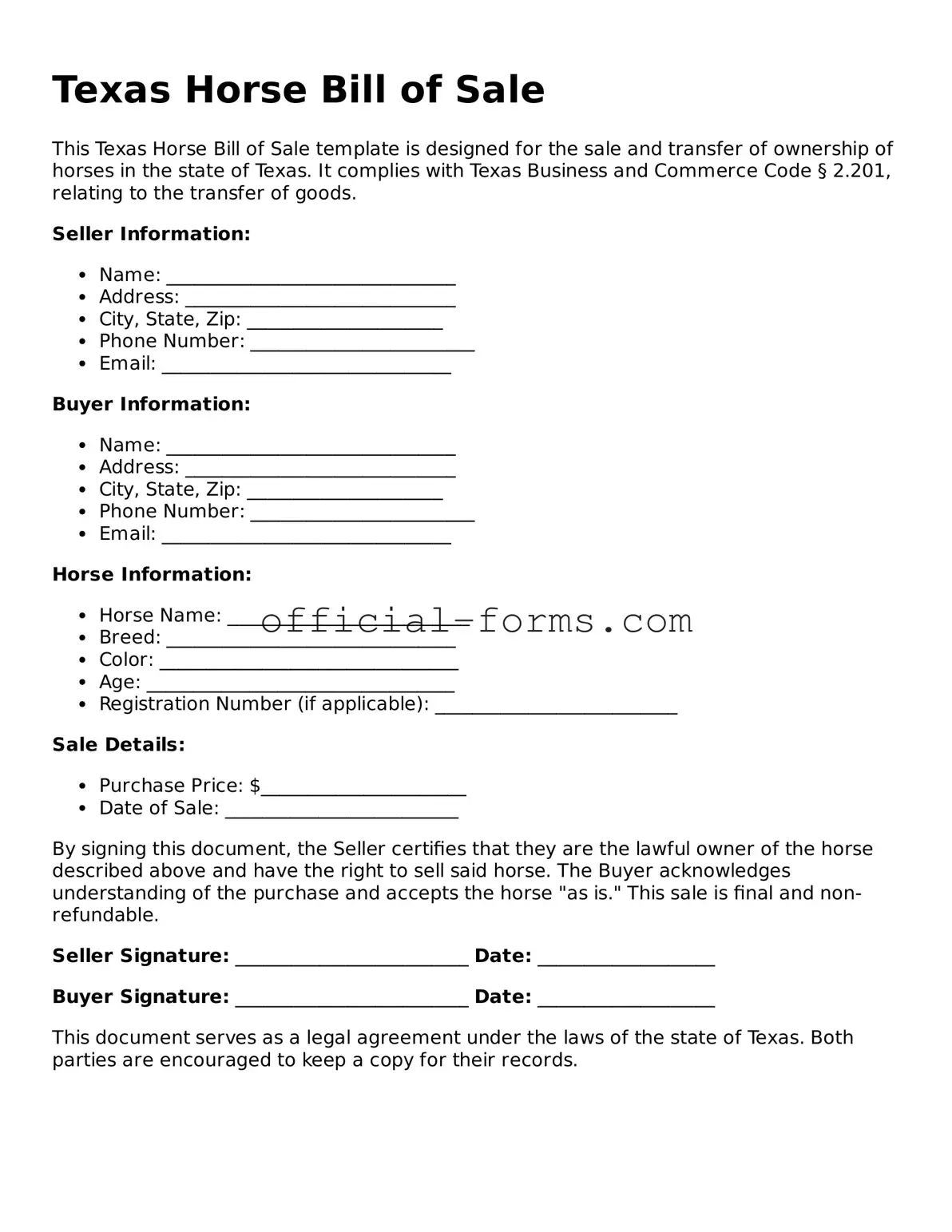When filling out the Texas Horse Bill of Sale form, many individuals unknowingly make mistakes that can lead to complications down the line. One common error is failing to provide complete and accurate information about the horse being sold. Essential details such as the horse’s breed, age, color, and registration number should be clearly stated. Omitting this information can create confusion and disputes later on.
Another frequent mistake is neglecting to include the seller’s and buyer’s contact information. It’s crucial to provide full names, addresses, and phone numbers. This information not only facilitates communication but also serves as a record of the transaction. Without it, tracing either party in the future could become challenging.
People often overlook the importance of signatures. Both the buyer and seller must sign the document for it to be valid. A lack of signatures can render the bill of sale ineffective, leaving both parties without legal protection. It’s advisable to double-check that all necessary signatures are present before finalizing the document.
Additionally, some individuals fail to specify the terms of the sale. Including details such as the sale price, payment method, and any conditions of the sale is vital. These terms protect both parties and clarify expectations. Leaving this section blank can lead to misunderstandings and potential legal issues.
Another mistake involves not providing a date for the transaction. A date is essential to establish when the sale took place. Without it, determining the timeline of ownership can become complicated, especially if disputes arise later.
In some cases, people may not take the time to review the form thoroughly before submission. Errors in spelling or incorrect information can undermine the credibility of the document. Taking a moment to proofread can help ensure that all details are accurate and complete.
Some individuals also forget to keep a copy of the completed bill of sale for their records. Having a copy is crucial for both the buyer and seller. It serves as proof of the transaction and can be invaluable if any questions or disputes arise in the future.
Lastly, individuals might not be aware of the specific requirements for notarization. While notarization is not always necessary for a bill of sale, certain situations may require it to be legally binding. Understanding these requirements can help avoid potential issues.
